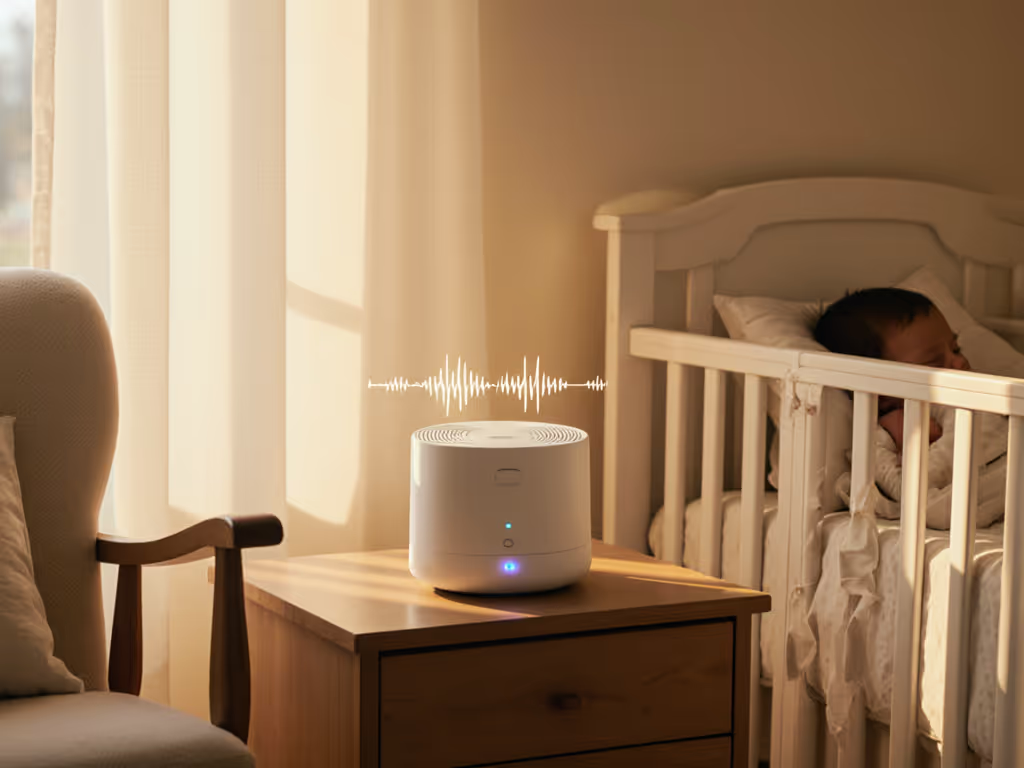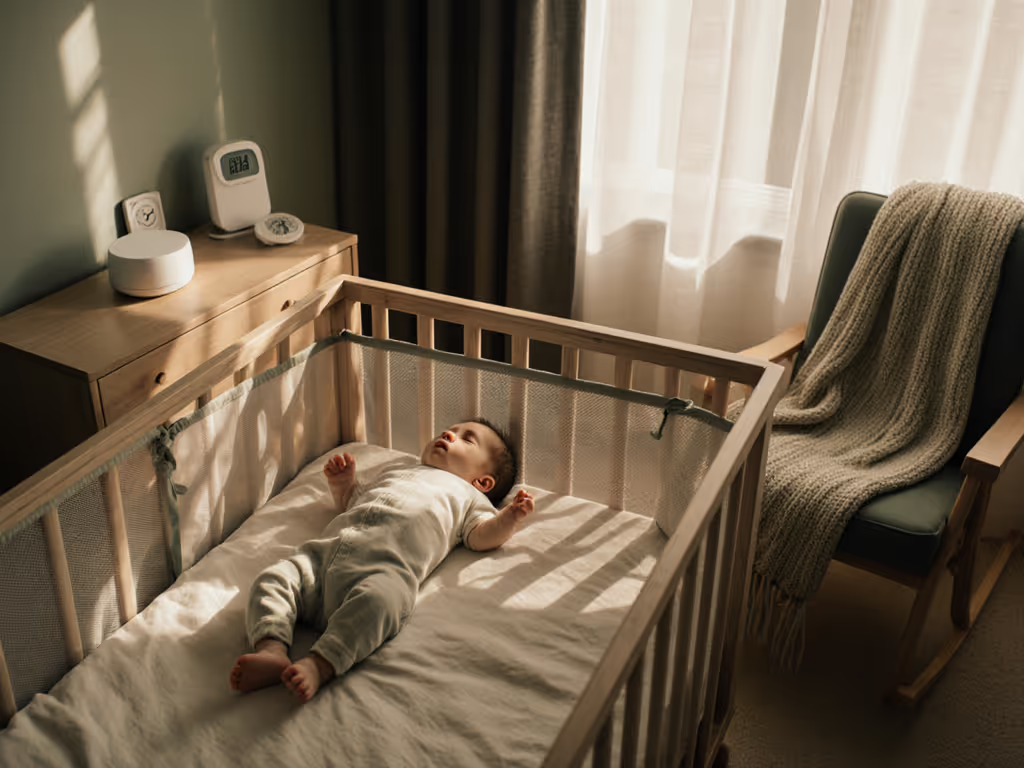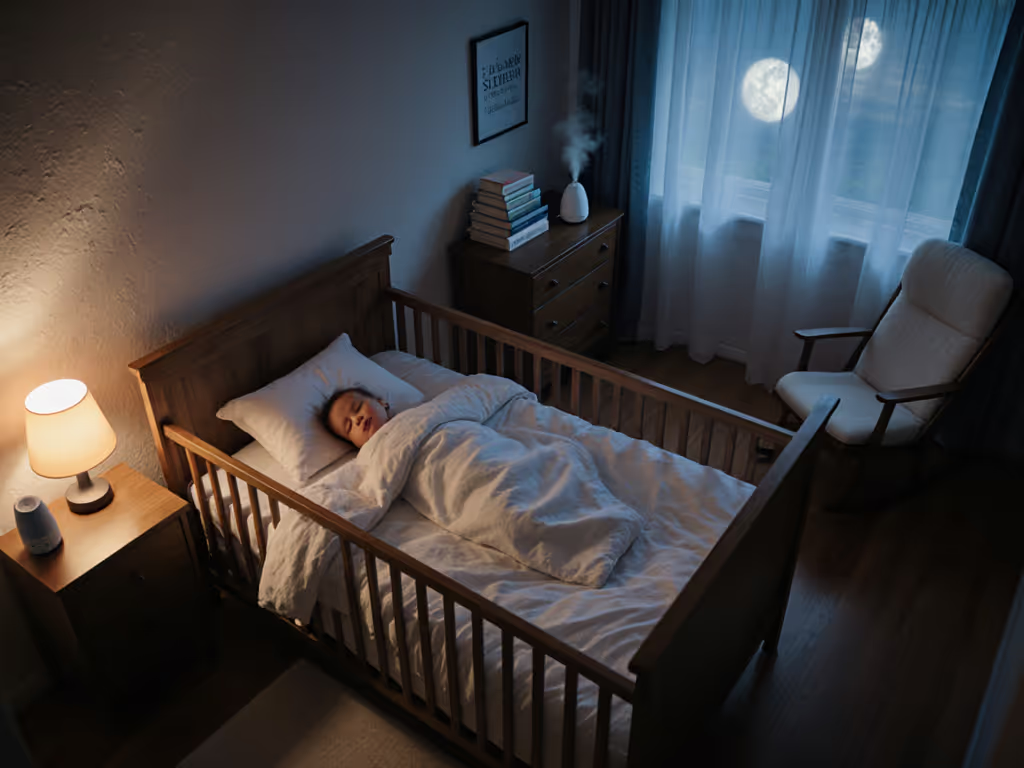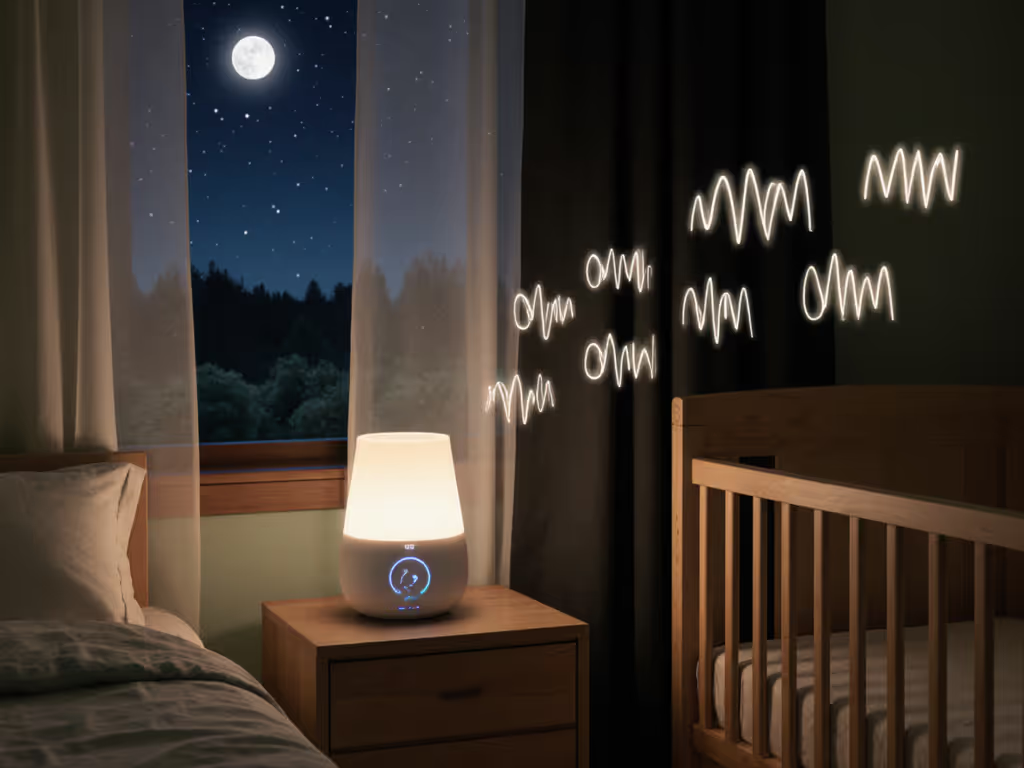
Noise Dosimetry for Newborns: Comprehensive Guide

Noise Dosimetry for Newborns: Comprehensive Guide
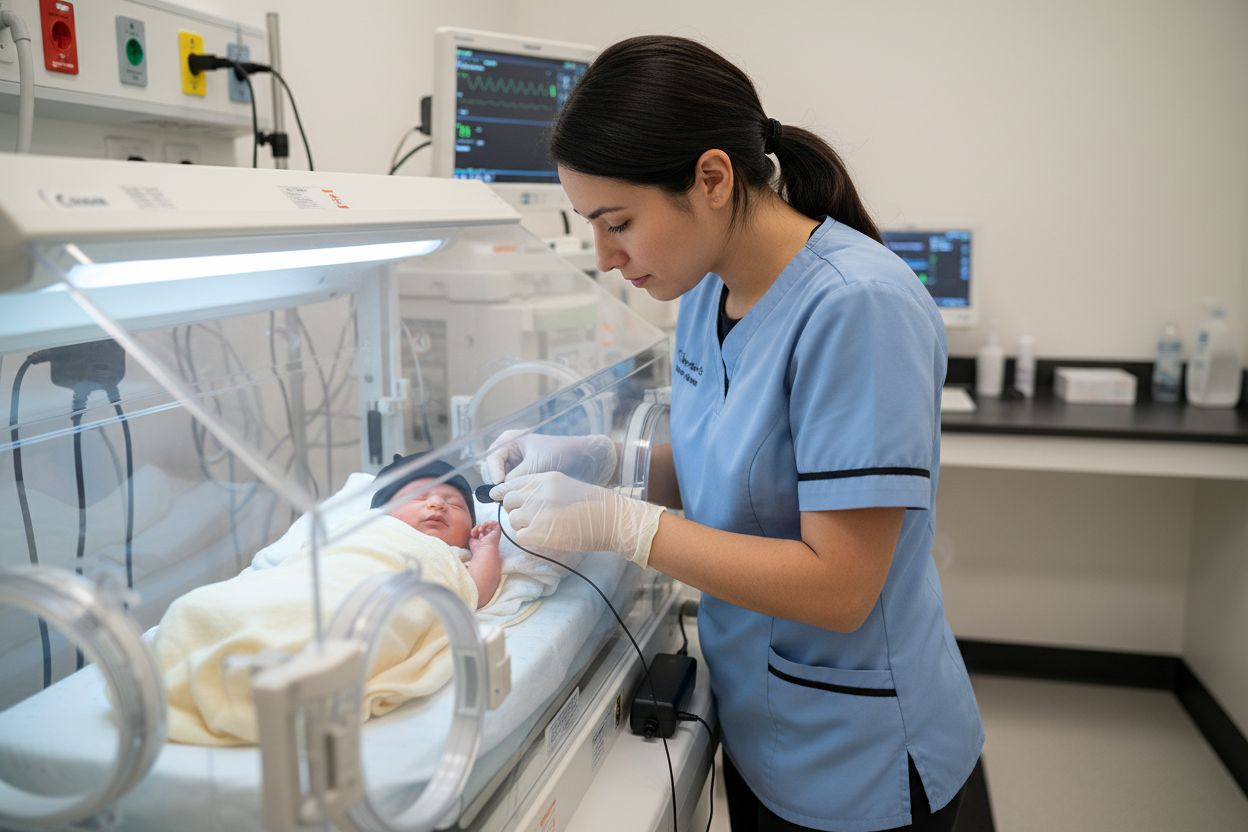
Did you know that the womb surrounds a baby with steady sounds reaching up to 88 dB before birth? Once born, a newborn’s ears experience a world full of unpredictable and often much louder noises. Even small differences in sound exposure can shape early brain development, making noise measurement vital for your baby’s health. Understanding how sound impacts newborns helps parents and caregivers create safer, quieter environments.
Key Takeaways
| Point | Details |
|---|---|
| Importance of Noise Dosimetry | Accurate measurement of sound exposure is critical for newborns, whose sensitive auditory systems can be adversely affected by noise. |
| Unique Measurement Challenges | Standard adult-oriented measurement techniques can misrepresent an infant's true sound experience, necessitating specialized approaches. |
| Critical Noise Exposure Variations | Newborns experience diverse sound environments that range significantly in volume and can impact their developmental processes. |
| Standards and Safety Considerations | Established guidelines from organizations like AAP and WHO set specific noise level limits in various settings to protect infant hearing health. |
Table of Contents
- Defining Noise Dosimetry For Newborns
- Variations In Newborn Noise Exposure
- How Newborn Noise Dosimetry Works
- Standards And Safety Thresholds
- Measurement Tools And Techniques
- Practical Noise Reduction Strategies
Defining Noise Dosimetry for Newborns
Noise dosimetry represents a critical yet often overlooked aspect of infant sound environment monitoring. Simply put, it's the scientific measurement and analysis of sound exposure levels that an infant experiences throughout their daily routines. For newborns, this isn't just about volume—it's about understanding the cumulative acoustic impact on their delicate auditory systems.
The complexity of noise dosimetry for infants goes far beyond basic sound level tracking. Recent research underscores the nuanced nature of these measurements, highlighting that microphone placement and weighting metrics dramatically influence the accuracy of sound exposure assessments. A groundbreaking study revealed that standard adult-oriented measurement techniques can significantly misrepresent the actual sound experience for neonates. Check out our guide on safe sound machine settings to understand these intricate measurement challenges.
Key considerations in newborn noise dosimetry include:
- Precise measurement at ear level
- Understanding frequency-specific sound impacts
- Tracking both continuous and intermittent noise exposures
- Evaluating potential long-term auditory development risks
What makes infant noise dosimetry unique is the recognition that newborns perceive sound differently from adults. Their smaller ear canals, developing auditory systems, and increased sound sensitivity require specialized measurement approaches that traditional acoustic monitoring techniques simply cannot capture. This precision is crucial for protecting their sensitive hearing during critical developmental stages.
Variations in Newborn Noise Exposure
Noise exposure for newborns isn't a uniform experience but a complex landscape of acoustic variations. Remarkably, infants encounter dramatically different sound environments—from the muffled, steady 72–88 dB background sounds experienced in utero to the unpredictable noise profiles of modern environments like homes and neonatal intensive care units (NICUs). Learn more about safe sleep sound strategies to understand these intricate acoustic landscapes.
The range of noise sources affecting newborns is surprisingly diverse. Medical devices, electronic toys, household appliances, white-noise machines, and even everyday conversations can produce sound levels spanning from gentle 50 dBA whispers to potentially jarring 85 dBA peaks. These variations aren't just about volume—they represent potential developmental risks that demand careful monitoring and understanding.
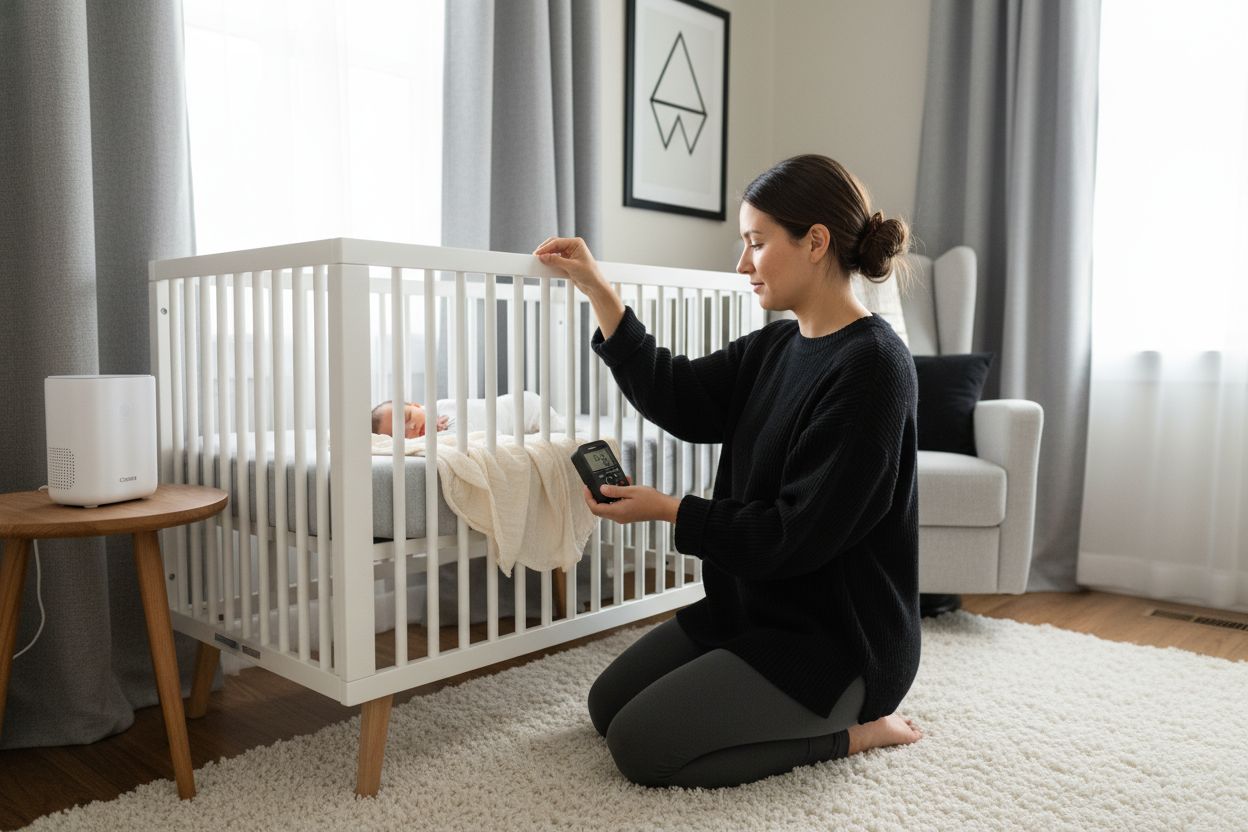
Key noise exposure variations include:
- In Utero Sounds: Steady 72–88 dB background noise
- NICU Environments: Fluctuating sounds from 50–85 dBA
- Home Settings: Intermittent noise from devices, conversations, media
- Personal Devices: White noise machines with variable output levels
Understanding these variations is crucial because newborns' auditory systems are uniquely vulnerable. Their smaller ear canals and developing neural pathways mean that sound doesn't just enter—it interacts with their entire developmental process. What might seem like background noise to an adult could represent a significant acoustic event for a newborn, potentially impacting hearing development, stress responses, and even long-term neurological functioning.
Here's a comparison of common newborn noise exposure settings:
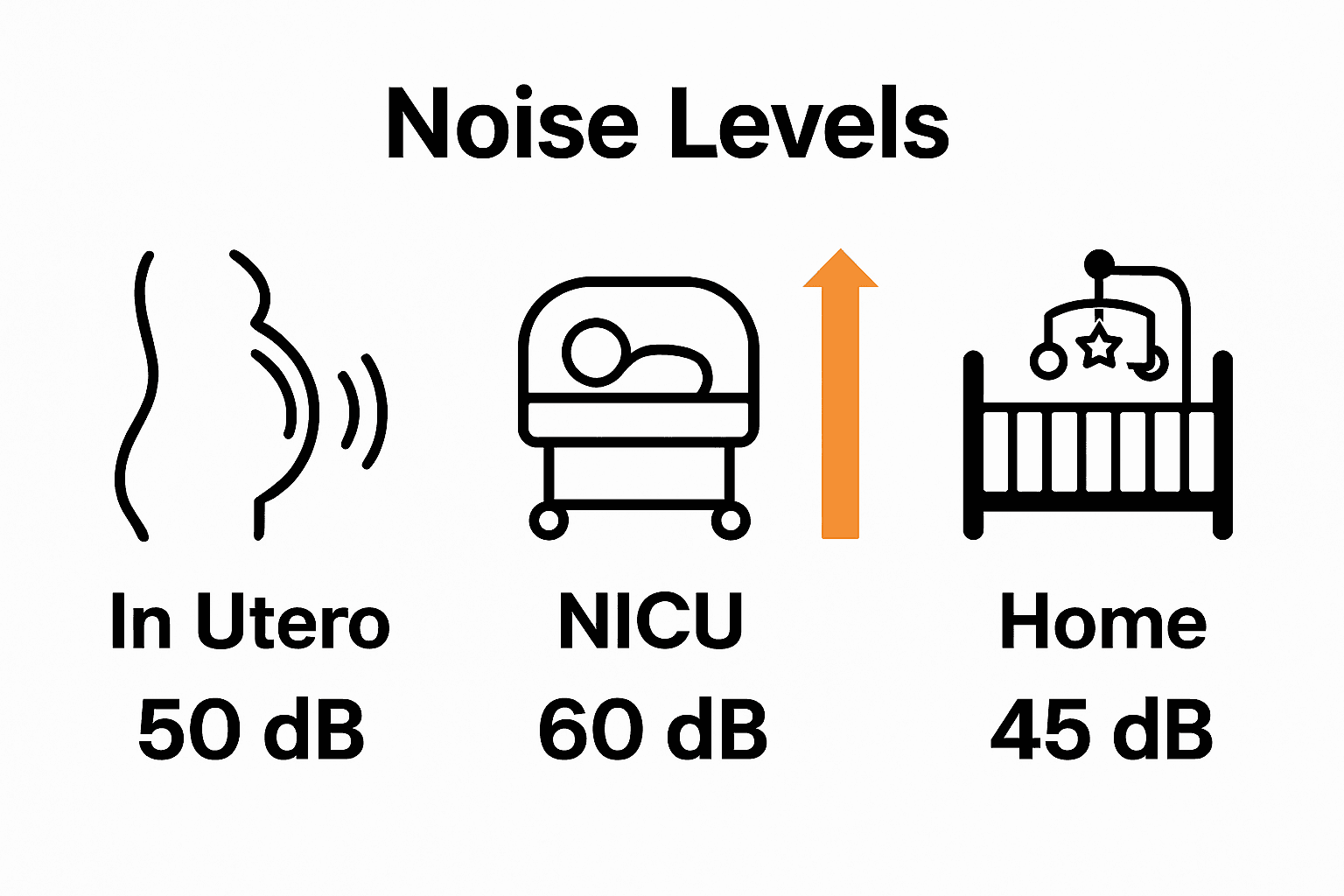
| Environment | Typical Noise Level | Main Sources |
|---|---|---|
| In Utero | 72–88 dB | Maternal body sounds<br>Heartbeat |
| NICU | 50–85 dBA | Medical devices<br>Staff activity |
| Home | 50–70 dBA | Appliances<br>TV<br>Conversations |
| Personal Devices | Variable (up to 85 dBA) | White noise machines<br>Mobiles |
How Newborn Noise Dosimetry Works
Noise dosimetry for newborns is a sophisticated process that goes far beyond simple sound measurement. It's essentially a comprehensive acoustic investigation designed to capture the intricate ways sound interacts with an infant's developing auditory system. Learn more about safety guidelines for noise monitoring, which provides crucial context for understanding these complex measurements.
The technical mechanics of newborn noise dosimetry involve several critical components. Specialized microphones are strategically positioned to capture sound exactly as an infant would perceive it—typically placed near the ear at precise distances. Researchers use advanced weighting scales (primarily A-weighting and C-weighting) to adjust measurements, accounting for how human ears process different sound frequencies. These scales are particularly crucial for neonates, whose acoustic perception differs significantly from adults.
Key elements of newborn noise dosimetry include:
- Precise microphone placement mimicking infant ear position
- Frequency-specific weighting adjustments
- Capturing both continuous and transient sound events
- Statistical analysis of acoustic exposure patterns
- Tracking potential long-term auditory development impacts
What makes this process truly remarkable is its holistic approach. Modern noise dosimetry doesn't just measure decibel levels—it explores the nuanced ways sound energy interacts with an infant's developing neurological and auditory systems. By using binaural measurement techniques and advanced psychoacoustic metrics, researchers can now create a much more accurate picture of an infant's true sound environment, moving beyond simplistic volume measurements to understand the complex acoustic landscape that surrounds newborns.
Standards and Safety Thresholds
Navigating the acoustic safety landscape for newborns requires precise, scientifically validated noise standards that protect their delicate developing auditory systems. The American Academy of Pediatrics (AAP) and World Health Organization (WHO) have established comprehensive guidelines that serve as critical benchmarks for infant sound exposure. Explore our detailed guide on safe sound machine settings to understand these intricate recommendations.
These guidelines provide nuanced recommendations across different environments. In neonatal intensive care units (NICUs), the standards are particularly stringent—recommending continuous background noise levels at or below 45 dBA. More specifically, the guidelines outline detailed metrics:
- Daytime Noise Levels: Maximum 40 dBA
- Nighttime Noise Levels: Maximum 35 dBA
- Hourly Equivalent Sound Level (Leq): Below 50 dBA
- Peak Sound Levels (L10): Below 55 dBA
- Maximum Sound Levels (Lmax): Below 70 dBA
These thresholds aren't arbitrary but represent careful scientific consideration of infant physiological responses. Prolonged exposure beyond these levels can potentially disrupt critical developmental processes, impact sleep patterns, and even influence long-term neurological development. The standards account for the unique acoustic sensitivity of newborns, recognizing that their smaller ear canals and developing auditory systems process sound fundamentally differently from adults.
Measurement Tools and Techniques
Noise measurement for newborns requires sophisticated tools that go far beyond standard acoustic monitoring equipment. Specialized sound level meters and advanced dosimeters have been developed to capture the nuanced acoustic landscape surrounding infants, with precision that traditional devices simply cannot match. Learn more about infant sound environment safety to understand the complexity of these measurement techniques.
Researchers employ multiple advanced techniques to ensure accurate sound assessment. These include strategic microphone positioning—typically placed directly at ear level to simulate the infant's exact acoustic experience—and utilizing specialized weighting scales like C-weighting with slow response settings. The measurement arsenal includes complex metrics such as:
- LAeq: Equivalent continuous sound level
- L10: Sound level exceeded 10% of measurement time
- Lmax: Maximum sound level during measurement period
- Binaural measurements: Capturing sound from both ears simultaneously
- Transient event tracking: Identifying short-duration acoustic disruptions
What sets modern neonatal acoustic measurement apart is its holistic approach. These tools don't just record volume—they capture the intricate soundscape's psychological and physiological impacts. By using advanced psychoacoustic metrics and sophisticated recording techniques, researchers can now create comprehensive sound profiles that reveal how different acoustic environments might influence an infant's developing neurological and auditory systems.
Practical Noise Reduction Strategies
Reducing noise exposure for newborns requires a multifaceted approach that combines environmental design, behavioral modifications, and strategic acoustic management. Noise reduction isn't just about turning down volume—it's about creating a holistic soundscape that supports infant development. Learn more about safe sleep sound strategies to understand the nuanced approaches to managing infant acoustic environments.
Healthcare and home environments can dramatically reduce noise through targeted interventions. In neonatal intensive care units (NICUs), quality improvement initiatives have demonstrated remarkable success. One study showed a 10% reduction in ambient noise levels—dropping from 62.4 to 56.1 dB—by implementing systematic modifications. These strategies include:
- Using high-performance sound-absorbing materials
- Establishing designated 'quiet hours'
- Training staff in noise-reduction protocols
- Implementing continuous sound monitoring systems
- Designing single-room or low-noise patient areas
At home, parents can adopt similar principles. Acoustic mindfulness involves being intentional about sound sources, using soft-close drawers, choosing quieter appliances, and creating designated low-noise zones. By understanding that an infant's auditory system is uniquely sensitive, caregivers can proactively design environments that minimize unnecessary acoustic stress, supporting healthier neurological and auditory development.
Protect Your Baby’s Hearing with Expert-Backed Solutions
New parents and caregivers know how complex infant sound environments can be. This article revealed how noise dosimetry for newborns is much more than tracking volume. You might worry if your home or nursery actually meets the strict sound standards experts recommend. If you’re struggling to measure or manage noise around your baby, you are not alone. Many families share fears about prolonged exposure to unpredictable sounds, especially after learning how sensitive tiny ears truly are.
Ready for peace of mind and proven answers? Discover how Acoustic Lab for Little Ears offers practical guides for real homes just like yours. Our data-driven recommendations blend laboratory decibel measurements with real-world testing. Feel confident with safe sleep sound strategies and noise reduction tips designed specifically for newborn needs. Take the next step. Visit babysoundmachines.me now and create the safest sound environment for your little one.
Frequently Asked Questions
What is noise dosimetry for newborns?
Noise dosimetry for newborns refers to the scientific measurement and analysis of sound exposure levels experienced by infants, which is crucial for understanding its cumulative impacts on their delicate auditory systems.
Why is measuring noise exposure important for newborns?
Measuring noise exposure is vital because newborns have sensitive auditory systems that differ significantly from adults. Prolonged exposure to high noise levels can disrupt developmental processes and impact long-term auditory and neurological functions.
What are the recommended noise exposure levels for infants in a nursery or home setting?
For infants, noise levels in a nursery or home should ideally remain below 50–70 dBA to minimize the risk of auditory development issues. Continuous exposure above 45 dBA in environments like NICUs can also be stressful for newborns.
How can caregivers reduce noise exposure for newborns at home?
Caregivers can reduce noise exposure by creating designated quiet zones, using appliances with lower noise levels, soft-close drawers, and incorporating sound-absorbing materials in the baby's room to minimize unnecessary acoustic stress.
Recommended
- Safe Baby Sound Machines: AAP Volume and Distance Guide | Baby Sound Machines
- Newborn White Noise Machine Safety: Distance & Volume Rules | Baby Sound Machines
- Baby White Noise Benefits: Safe 50-60 dB Decibel Guide | Baby Sound Machines
- Newborn Sleep Sounds: Choosing White or Brown Noise Safely | Baby Sound Machines

